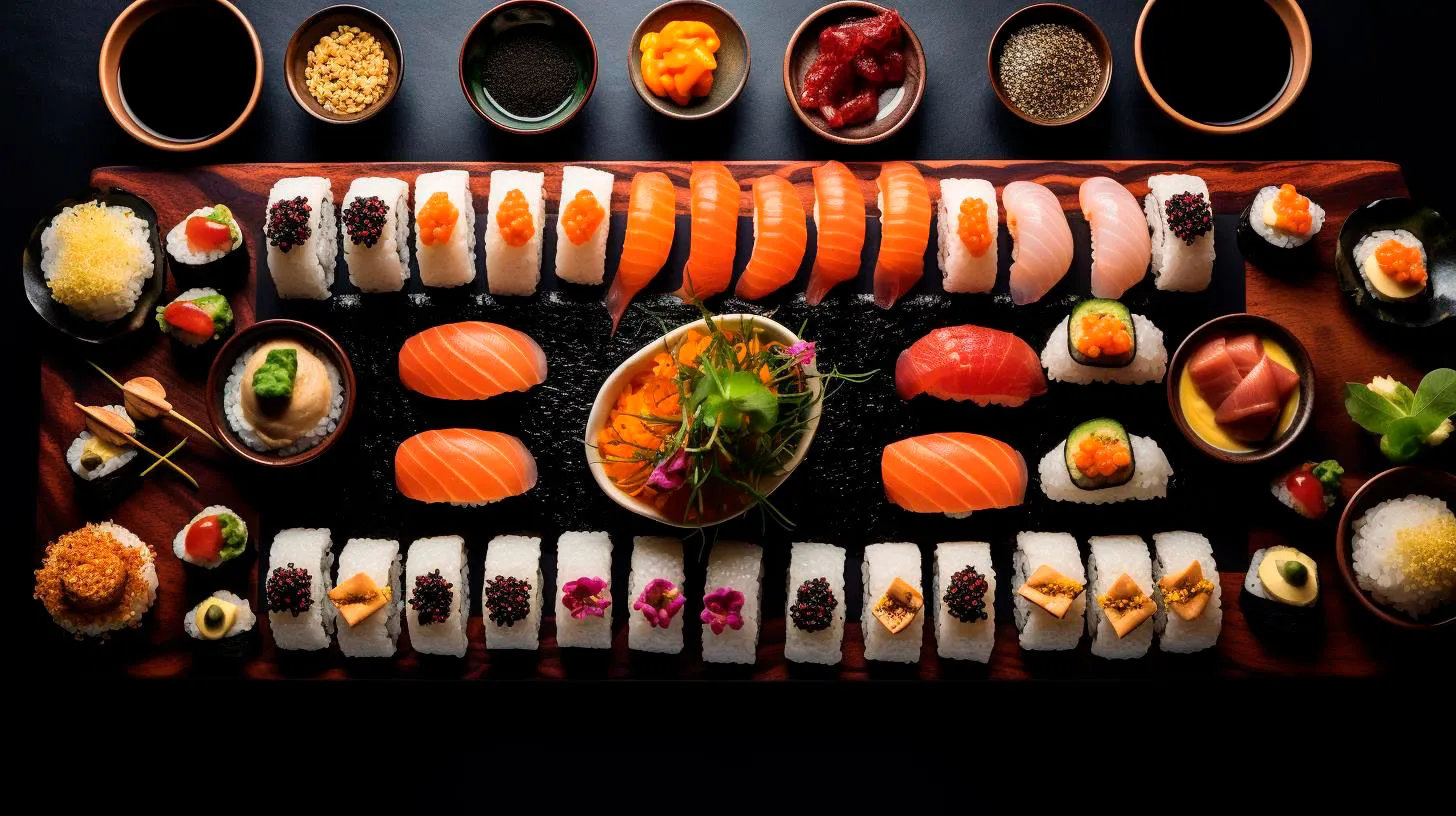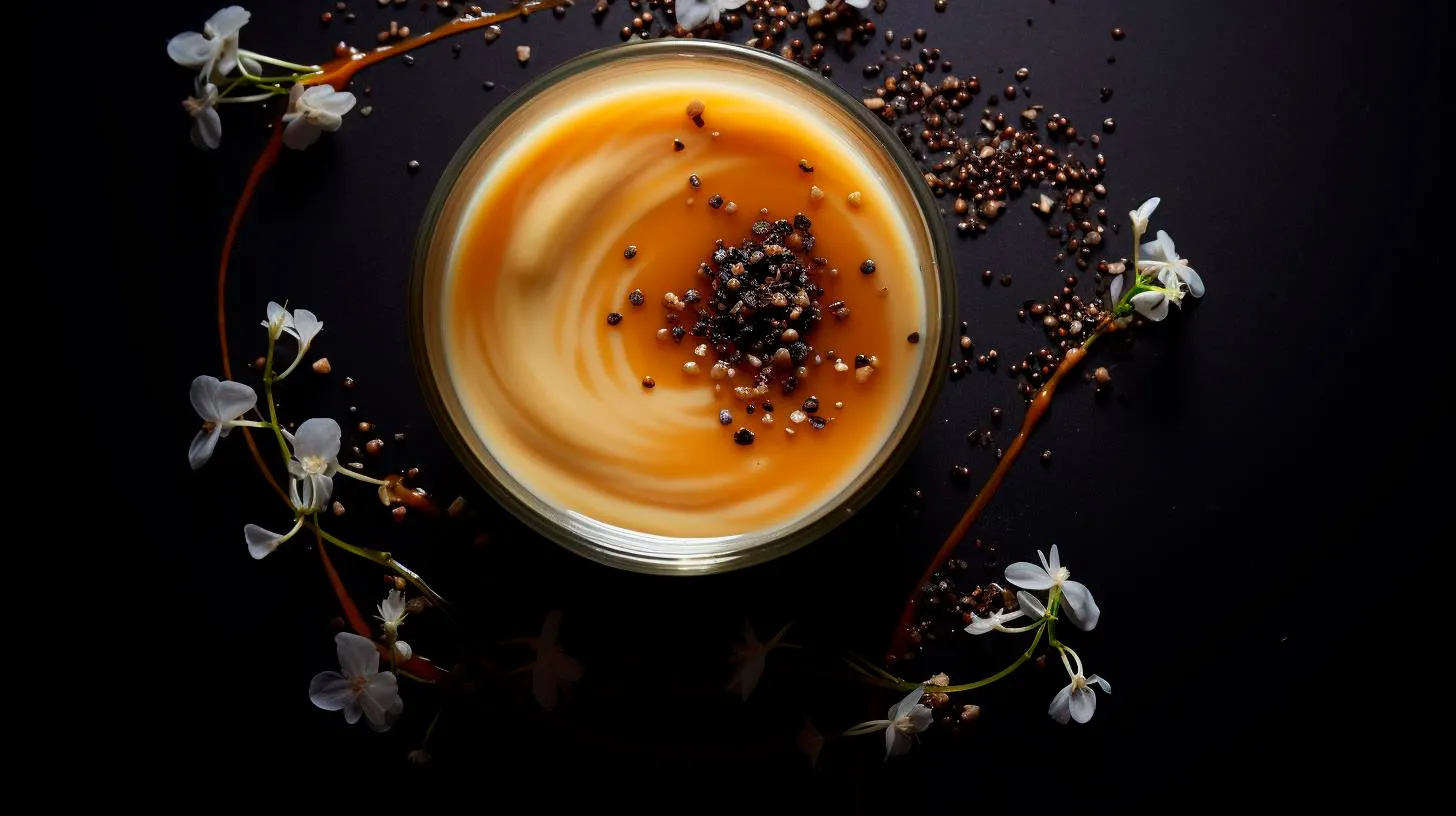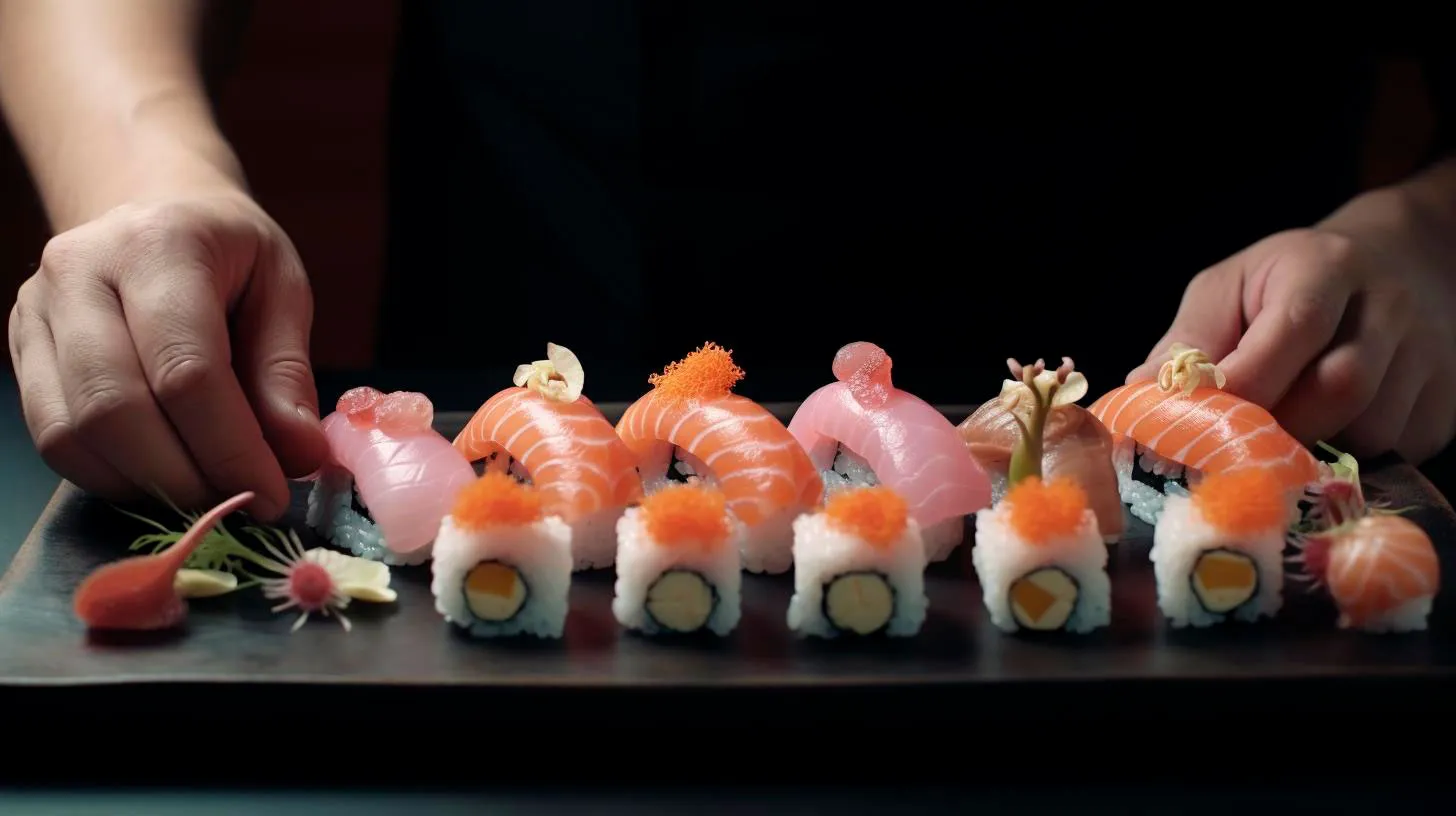Step-by-Step Instructions for Properly Handling a Sushi Knife
One of the most important tools in any sushi chef’s arsenal is a sushi knife. In this article, we’ll take you through step-by-step instructions for properly handling a sushi knife to ensure safety and maximize the knife’s performance.
Why is Properly Handling a Sushi Knife Important?
Properly handling a sushi knife is not only about safety but also about maintaining the knife’s sharpness and precision. A sharp and well-maintained sushi knife allows you to create perfect sushi cuts, enhancing the flavors and presentation of your dishes. Additionally, mishandling a sushi knife can lead to accidents and injuries, which we want to avoid at all costs.
Step 1: Choosing the Right Sushi Knife
Before we dive into the proper handling techniques, it’s important to select the right sushi knife. There are several types of sushi knives available, such as the Yanagiba, Deba, and Usuba. Each knife has its own specific purpose and features. Ensure you choose a knife that suits your needs and preferences.
Key Takeaways:
- Choose a sushi knife that suits your specific needs and preferences.
- Consider the type of knife required for the desired sushi cuts.
- Invest in a high-quality sushi knife to ensure longevity and performance.
Step 2: Holding the Sushi Knife
Now that you’ve selected the right sushi knife, it’s time to learn how to properly hold it. The correct grip is essential for precise and safe cuts. Here’s a step-by-step guide:
- Hold the handle: Grasp the handle firmly, making sure it feels comfortable in your hand.
- Place your index finger: Rest your index finger lightly on the spine of the blade. This will provide stability and control during cutting.
- Curl your other fingers: Curl the remaining fingers around the handle, avoiding any contact with the blade.
Key Takeaways:
- Hold the handle firmly for control and stability.
- Rest your index finger on the spine of the blade.
- Curl the other fingers around the handle, keeping them away from the blade.
Step 3: Cutting Techniques
Now that you’ve mastered the grip, it’s time to learn the basic cutting techniques with your sushi knife. Here are a few essential cutting techniques for sushi preparation:
1. Slicing
The slicing technique is used to create thin and precise cuts, ideal for sashimi or nigiri. To execute a perfect slice:
- Hold the sushi knife at a slight diagonal angle towards the cutting board.
- Apply gentle pressure while gliding the knife through the fish or roll with a long, smooth motion.
2. Chopping and Dicing
Chopping and dicing are commonly used for sushi rolls and other ingredients. Follow these steps:
- Hold the knife blade parallel to the cutting surface, using your knuckles as a guide for consistent thickness.
- Using swift downward motions, chop or dice the ingredients as per the required size.
Key Takeaways:
- Practice slicing techniques for precise cuts like sashimi or nigiri.
- Hold the knife at a slight diagonal angle for slicing.
- Use chopping and dicing techniques for sushi rolls and other ingredients.
- Keep your knuckles as a guide for consistent thickness.
Step 4: Knife Maintenance
Proper maintenance is crucial to keep your sushi knife in optimal condition. Follow these maintenance tips:
- Hand wash the knife with warm water and mild soap immediately after each use.
- Avoid using abrasive materials, such as steel wool, to clean the blade as it may damage the knife.
- Dry the knife thoroughly to prevent rust or corrosion.
- Regularly sharpen the blade using a whetstone to maintain sharpness.
Key Takeaways:
- Hand wash the knife after each use.
- Avoid abrasive materials when cleaning the blade.
- Dry the knife thoroughly to prevent rust or corrosion.
- Regularly sharpen the blade to maintain sharpness.
By following these step-by-step instructions, you’ll be well on your way to handling a sushi knife like a pro. Remember, always prioritize safety and take care of your knife to ensure it serves you well for years to come. Happy sushi making!
Key Features to Look for in a High-Quality Sushi Knife
But with so many options available in the market, how do you choose the best one for your needs? In this article, we will explore the key features to look for in a high-quality sushi knife to help you make an informed decision.
1. Blade Material and Construction
The blade is the heart and soul of any knife, and the same goes for sushi knives. The blade material and construction play a crucial role in determining the knife’s quality and performance. Here are some key points to consider:
- High Carbon Stainless Steel: Look for a sushi knife made from high carbon stainless steel. This material combines the edge retention of carbon steel with the rust resistance of stainless steel, providing a durable and long-lasting blade.
- Single Bevel Blade: Traditional sushi knives have a single bevel blade, meaning the cutting edge is only on one side. This design allows for precise cuts and enhances the slicing efficiency.
- Honbazuke Blade: A honbazuke blade refers to a knife that has been sharpened with a traditional Japanese method. This technique results in a razor-sharp edge, ideal for clean and precise cuts.
2. Blade Length and Shape
Sushi knives come in various blade lengths and shapes, each serving a specific purpose. Consider these factors when selecting the right blade for you:
- Blade Length: The blade length typically ranges from 8 to 10 inches. Longer blades are more suitable for professionals and experienced chefs, while shorter blades are ideal for beginners or those with smaller hands.
- Shape: The most commonly used shape for sushi knives is the Yanagiba, which features a long, thin, and tapered blade. This shape allows for precise slicing and minimal resistance as the knife glides through the fish.
3. Handle Design and Material
While the blade is vital, the handle also plays a significant role in your sushi knife’s performance and comfort. Look for the following features:
- Ergonomic Design: A sushi knife handle should have an ergonomic design that provides a comfortable grip and reduces hand fatigue during long hours of use.
- Material: Traditional sushi knife handles are often made from wood, such as ho wood or magnolia wood. However, some modern options feature handles made from materials like stainless steel or composite materials. Choose a material that suits your preferences and provides a secure grip.
4. Balance and Weight
The balance and weight of a sushi knife are key factors to consider as they affect the knife’s handling and maneuverability. Here’s what to look for:
- Balance: A well-balanced knife ensures that the weight is evenly distributed between the blade and the handle. This balance allows for precise control and reduces the chance of accidents or hand strain.
- Weight: The weight of the knife is a matter of personal preference. Some chefs prefer lightweight knives that offer agility and nimbleness, while others opt for heavier knives that provide more stability and power during the slicing process.
Key Takeaways
When searching for a high-quality sushi knife, keep the following key takeaways in mind:
- Opt for a sushi knife made from high carbon stainless steel with a single bevel and a honbazuke blade for sharpness and durability.
- Select a blade length and shape that suits your needs and level of expertise.
- Consider the handle design and material for comfort and grip.
- Ensure the knife has the right balance and weight for your preferred style of slicing.
Investing in a high-quality sushi knife is crucial if you want to elevate your sushi-making skills. The right knife will not only enhance your slicing techniques but also make the process more enjoyable. By considering the key features mentioned in this article, you can confidently choose a sushi knife that fits your needs and helps you create beautiful and delicious sushi creations.
Understanding the Different Types of Sushi Knives
A sushi knife is specifically designed to allow the chef to slice through delicate raw fish and other ingredients with utmost precision. In this article, we will delve into the different types of sushi knives, their features, advantages, and key takeaways.
Yanagiba Knife (Sashimi Knife)
One of the most commonly used sushi knives is the yanagiba knife, also known as the sashimi knife. This long and slender knife features a single bevel edge, which allows for extremely clean cuts. Some key features and advantages of the yanagiba knife include:
- The long, narrow blade design enables the chef to make precise, thin slices of raw fish without tearing or damaging the delicate flesh.
- Sharp and precise cuts ensure the flavor of the fish remains intact, enhancing the overall taste of the sushi.
- Efficient cutting technique reduces waste, ensuring each piece of sushi is of the highest quality.
Deba Knife
The deba knife is a heavy-duty sushi knife that is primarily used for filleting and butchering fish. It features a thick, robust blade with a single bevel, which allows for powerful and clean cuts through fish bones. Some key features and advantages of the deba knife include:
- The thick, sturdy blade design enables the chef to handle tougher tasks such as filleting and cutting through fish bones, cartilage, and tough skin.
- Allows for precise control while deboning and portioning fish, ensuring minimal wastage.
- Ideal for preparing other ingredients like meat and poultry as well.
Usuba Knife
The usuba knife, also known as the vegetable knife, is primarily used for slicing and chopping vegetables to be used in sushi and other Japanese dishes. It features a thin, rectangular blade with a single bevel. Some key features and advantages of the usuba knife include:
- The thin, flat blade design allows for precise, clean cuts through vegetables, minimizing bruising and damage.
- The single bevel edge ensures superior cutting performance and ease of use when cutting through fibrous vegetables.
- Allows for efficient and quick vegetable preparation, saving valuable time in sushi production.
Takobiki Knife
The takobiki knife is a specialty sushi knife primarily used for cutting octopus (tako). It features a long, thin, and slightly curved blade with a double bevel. Some key features and advantages of the takobiki knife include:
- The thin, long blade design allows for extremely precise cutting of octopus, ensuring consistency in thickness and appearance.
- The double bevel edge allows for versatile use, making it suitable for slicing other ingredients as well.
- Ensure the presentation of octopus-based sushi dishes is visually appealing.
Key Takeaways
Sushi knives are an essential tool for sushi chefs, enabling them to work with precision and skill. Understanding the different types of sushi knives can help you appreciate the artistry behind sushi-making and select the appropriate knife for your needs. Here are the key takeaways:
- The yanagiba knife is ideal for thinly slicing raw fish, ensuring clean cuts and enhancing the flavor of the sushi.
- The deba knife is designed for filleting and butchering fish, providing the chef with control and precision.
- The usuba knife is perfect for slicing and chopping vegetables, allowing for efficient and precise preparation.
- The takobiki knife is designed specifically for cutting octopus, ensuring consistency and visually appealing presentation.
In conclusion, sushi knives are not just tools, they are an extension of a sushi chef’s skill and passion. By understanding the different types of sushi knives and their unique advantages, you can gain a deeper appreciation for the artistry and precision involved in creating the perfect piece of sushi.
Tips for Maintaining and Sharpening Your Sushi Knife
In this article, we will explore the best practices for keeping your sushi knife in top shape, ensuring that your sushi-making experience is always a cut above the rest.
The Importance of Maintaining Your Sushi Knife
Before we dive into the tips and tricks, it’s essential to understand why maintaining your sushi knife is crucial. A well-maintained knife not only enhances the efficiency and precision of your cuts but also ensures food safety and hygiene. Here are a few reasons why maintaining your sushi knife should be a top priority:
- Efficiency: A sharp knife allows you to make clean and precise cuts, ensuring consistency in the size and shape of your sushi rolls.
- Food Safety: A dull knife can lead to slippage and imprecise cuts, increasing the risk of accidents and injuries in the kitchen.
- Hygiene: A properly maintained knife reduces the chances of food contamination, ensuring a safe and healthy dining experience for your guests.
Tips for Maintaining Your Sushi Knife
Now that we understand the importance of maintaining your sushi knife, let’s explore some practical tips to keep it sharp and in prime condition:
Regular Cleaning and Drying
After each use, make sure to clean your sushi knife thoroughly with mild soap and warm water. Avoid using abrasive sponges or detergents that can damage the blade. Once cleaned, dry the knife immediately to prevent moisture and rust formation.
Storage
Proper storage is essential to avoid unnecessary wear and tear on your sushi knife. Consider investing in a knife sheath or a knife block to protect the blade from accidental bumps or scratches. It’s also important to store your knife away from other utensils to prevent damage.
Avoid Cutting Hard Foods
To maintain the sharpness of your sushi knife, avoid using it to cut hard foods such as bones or frozen ingredients. Hard foods can chip or dull the blade, reducing its effectiveness when preparing sushi.
Sharpening Your Sushi Knife
Sharpening your sushi knife regularly is essential to ensure its peak performance. Here are a few techniques to keep your knife sharp:
- Use a Whetstone: Invest in a high-quality whetstone specifically designed for sushi knives. Follow the manufacturer’s instructions to sharpen the blade at the correct angle.
- Honing Rod: A honing rod can be used to maintain the sharpness of your knife between sharpenings. Gradually slide the blade along the rod, ensuring equal pressure on both sides of the blade.
Seek Professional Help
If you’re unsure about sharpening your sushi knife yourself, it’s always a good idea to seek professional help. Professional knife sharpening services have the expertise and equipment to restore your knife’s sharpness effectively.
Key Takeaways
Maintaining and sharpening your sushi knife is essential for creating perfect sushi rolls and ensuring food safety. Here are the key takeaways from this article:
- Regularly clean and dry your sushi knife to maintain its hygiene and prevent rust.
- Invest in proper storage to protect the blade from accidental damage.
- Avoid cutting hard foods to prevent damage to the knife’s sharpness.
- Learn how to sharpen your sushi knife using a whetstone or honing rod.
- If unsure, seek professional help for sharpening your knife.
By following these tips, you can ensure that your sushi knife remains in optimal condition, allowing you to create beautiful and delicious sushi dishes time and time again. Happy sushi making!



